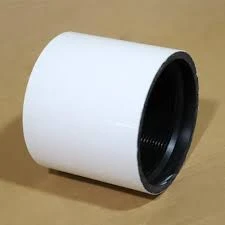- Afrikaans
- Albanian
- Amharic
- Arabic
- Armenian
- Azerbaijani
- Basque
- Belarusian
- Bengali
- Bosnian
- Bulgarian
- Catalan
- Cebuano
- Corsican
- Croatian
- Czech
- Danish
- Dutch
- English
- Esperanto
- Estonian
- Finnish
- French
- Frisian
- Galician
- Georgian
- German
- Greek
- Gujarati
- Haitian Creole
- hausa
- hawaiian
- Hebrew
- Hindi
- Miao
- Hungarian
- Icelandic
- igbo
- Indonesian
- irish
- Italian
- Japanese
- Javanese
- Kannada
- kazakh
- Khmer
- Rwandese
- Korean
- Kurdish
- Kyrgyz
- Lao
- Latin
- Latvian
- Lithuanian
- Luxembourgish
- Macedonian
- Malgashi
- Malay
- Malayalam
- Maltese
- Maori
- Marathi
- Mongolian
- Myanmar
- Nepali
- Norwegian
- Norwegian
- Occitan
- Pashto
- Persian
- Polish
- Portuguese
- Punjabi
- Romanian
- Russian
- Samoan
- Scottish Gaelic
- Serbian
- Sesotho
- Shona
- Sindhi
- Sinhala
- Slovak
- Slovenian
- Somali
- Spanish
- Sundanese
- Swahili
- Swedish
- Tagalog
- Tajik
- Tamil
- Tatar
- Telugu
- Thai
- Turkish
- Turkmen
- Ukrainian
- Urdu
- Uighur
- Uzbek
- Vietnamese
- Welsh
- Bantu
- Yiddish
- Yoruba
- Zulu
coupling for tubing
Coupling for Tubing An Essential Component in Oil and Gas Operations
In the oil and gas industry, the efficient transportation of resources from underground reservoirs to surface facilities relies heavily on the integrity and reliability of tubing systems. One crucial component in this system is the coupling, which plays a vital role in connecting sections of tubing and ensuring a seamless flow of fluids. This article explores the significance, types, and considerations of coupling for tubing in the context of oil and gas operations.
Understanding Couplings
A coupling serves as a mechanical device that joins two lengths of tubing together. By providing a robust connection, couplings enable the transfer of fluids, gases, and other materials under varying pressures and temperatures. The primary function of a coupling is to maintain the integrity of the tubing system while allowing for easy disassembly and reassembly when necessary.
Types of Couplings
There are several types of couplings used in tubing applications, each designed to meet specific operational needs. Common types include
1. Threaded Couplings These are the most widely used couplings in the industry. They feature male and female threads that create a secure connection when twisted together. Threaded couplings are easy to install and remove, making them a popular choice for temporary or adjustable tubing systems.
2. Welded Couplings For applications requiring a permanent connection, welded couplings provide exceptional strength and durability. This type of coupling involves the fusion of two tubing sections through welding, ensuring that there are no leakage points and that the integrity of the system is maintained.
coupling for tubing

3. Swaged Couplings These couplings are formed by deforming the ends of the tubing and then inserting one piece into the other, which is subsequently compressed to create a tight seal. Swaged couplings are often used in high-pressure applications where conventional threaded connections may not provide adequate security.
Considerations for Choosing Couplings
When selecting the appropriate coupling for a tubing system, several factors must be taken into account
- Material Compatibility Couplings must be made from materials that are compatible with the fluids being transported. For instance, corrosive materials require couplings made from resistant alloys to prevent degradation.
- Pressure Ratings Every coupling comes with specific pressure ratings, which indicate the maximum pressure it can safely handle. Choosing a coupling with an appropriate rating is crucial for preventing failures in the tubing system.
- Temperature Resistance High temperatures can affect the performance and lifespan of couplings. Therefore, it is vital to consider the operational temperature while selecting couplings.
In conclusion, couplings are indispensable components in tubing systems within the oil and gas industry. By understanding the different types of couplings and the key considerations for their selection, operators can ensure the safe and efficient transportation of fluids from underground reservoirs to processing facilities. The right coupling not only enhances operational efficiency but also mitigates the risks associated with tubing failures.
-
Well Casing Extension Couplings – Applications and InstallationNewsJun.06,2025
-
Types of Crossover Subs in Drilling & CompletionNewsJun.06,2025
-
Key Features of High-Quality Tubing Pup JointsNewsJun.06,2025
-
Installation and Maintenance Tips for Steel Couplings for PipeNewsJun.06,2025
-
How to Select the Right Pup Joint for Oil & Gas OperationsNewsJun.06,2025
-
Applications of Stainless Steel Pipe CouplingsNewsJun.06,2025







